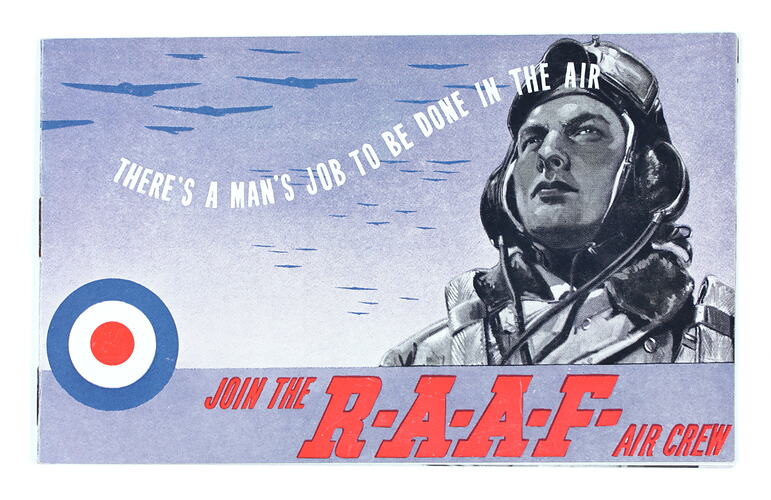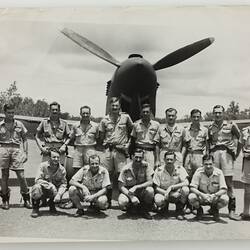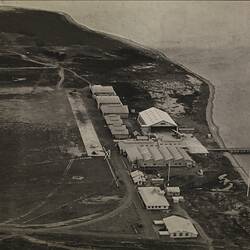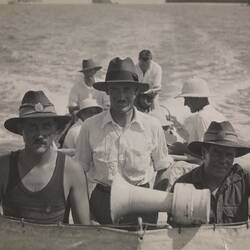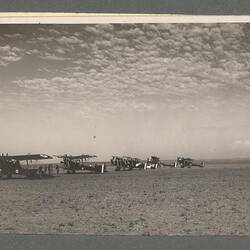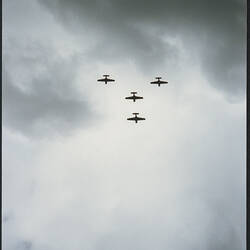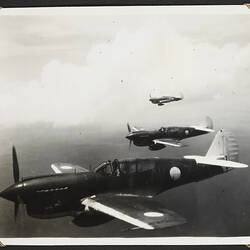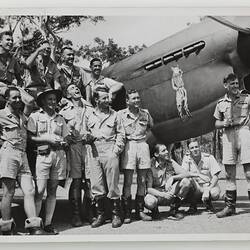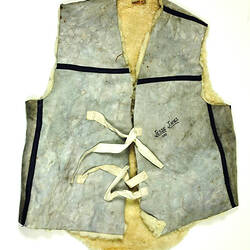On 13 August 1921, the His Majesty the King approved the name 'Royal Australian Air Force'. Five months earlier, on 31 March 1921, the Governor-General of Australia had approved the formation of the Australian Air Force.
During World War I, Australia had been the only British dominion to set up a flying corps for military service. From its foundations in 1914 as the Central Flying School at Point Cook, Victoria, it expanded to eight Australian Flying Corps (AFC) squadrons within the Australian Imperial Force (AIF) and linked to the Royal Air Force (Great Britain). A total of 3,640 personnel served and 175 were killed.
The first complete flying unit of the AFC, No. 1 Squadron, left Australia for the Middle East in March 1916. Museums Victoria holds two World War I photograph albums from a member of the No. 1 Squadron, Norman Henry Clutterbuck. He served in the No 1 Squadron in the Middle East and was appointed photographer on 5 July 1916. He served in several different AFC and Royal Air Force units and was promoted to corporal by the end of the war. Clutterbuck left the AFC but re-enlisted on the day the Governor-General approved the formation of the Australian Air Force on 31 March 1921. During World War II he became a Flying Officer and instructor at Point Cook.
In 1925 No.1 Air Depot was established at Laverton, in outer Melbourne, as a base for the erection, testing and maintenance of aircraft used by the RAAF. It was officially opened for service on 1 March 1926, becoming the RAAF's third air base after the nearby base at Point Cook and a base at Richmond, New South Wales, which opened a few weeks before Laverton. Museums Victoria holds a collection of 44 black and white aerial photographs including RAAF Laverton taken by Donald Leslie Ryan, 77th Squadron, RAAF, between 1938-1941. They include aerial and ground photographs of Melbourne, Laverton and Canberra. In later years Laverton also became an important training base and administrative centre. In 1989, the operations of Laverton and Point Cook were merged to form RAAF Williams, with airfield at Laverton subsequently decommissioned in 1996, although the remainder of the base remains in operation for administrative functions.
Museums Victoria holds other significant collections relating to the RAAF, including World War II photograph albums, personal effects, letters and uniforms. The collection includes 270 personal items left by RAAF personnel stationed at Melbourne's Exhibition Building during World War II that were found in 1989 during works to replace floorboards. They include intimate letters, food and personal effects. These items were never expected or intended to survive and offer a rare unfiltered record of a time lost to public memory.
Amongst other RAAF collection highlights is the Norman Henry 'Harry' James collection - a suitcase filled with mementoes of life as a World War II RAAF air crew member in Europe that were preserved, untouched, for more than 60 years.
References
Museums Victoria collections: Norman Henry Clutterbuck, Norman Henry James, D. L. Ryan and Royal Exhibition Building.
Air Force History and centenary https://www.airforce.gov.au/about-us/history and https://airforce2021.airforce.gov.au/, accessed 21/7/2021
http://nla.gov.au/nla.news-article232183122
'The Australian Flying Corps'. Australian War Memorial, https://www.awm.gov.au/articles/first-world-war-flying, accessed 20/7/2021.
Gazetting of Royal Australian Air Force 1921 'ORDER', Commonwealth of Australia Gazette (National : 1901 - 1973), 18 August, p. 1207. , viewed 21 Jul 2021, http://nla.gov.au/nla.news-article232183122
More Information
-
Keywords
-
Localities
-
Authors
-
Article types
